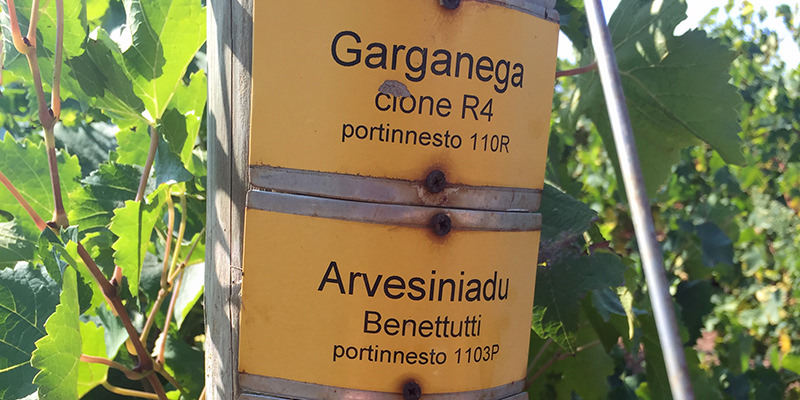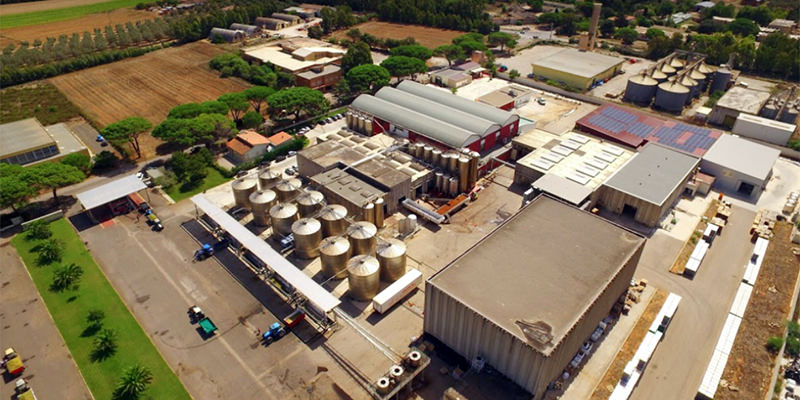
As Igor, our host form Cantina Santa Maria La Palma, drove me to my hotel from the airport, across the hilly scrub brush and under the palm trees of northwestern Sardinia to the seaside town of Alghero, he ran down the general schedule of my trip. A lot of eating and a lot of wine — with a tour of the winery and vineyards, of course. At some point he asked me if I had any dietary restrictions or allergies. I said no, and I will eat anything. It was a good setup. Have you heard of the worm cheese? he asked. I had, and thought it was a legend. Turns out this phenomenon of a cheese called Casu Marzu containing live fly larva was real and, along with many other native dishes, we would be sampling it.
And sample it I did as well as a plethora of other local dishes during my trip. The larva cheese is salty and spicy and delicious, by the way. These dishes were, of course, paired perfectly with wines made from the indigenous grapes of the region, the casa marzu with a dessert wine made from the local Vermentino grape.
The wines of Santa Maria La Palma — and there are many in its lineup — are a celebration of the grapes that have been a part of the Sardinian landscape since antiquity. The winery’s goal is to express the terroir of the Alghero DOC in as many ways as possible, in quite a laborious fashion: by selecting specific harvests for specific wine expressions, be they mono varietal wines or blends, sparkling or still.
It is a great success. They work mostly with the native red grape Cannonau, producing soft, medium- bodied reds with vibrant fruit and spice, mingling with wafts of plum and hints of cranberry; or with the white grape Vermentino with its racy acidity and mineral-driven citrus with notes of green apple and slight hints of almond. And somehow, along with the addition of some international varieties such as Chardonnay and Cabernet Sauvignon, they are able to create a solid line of over 20 wine styles that each has its own personality. They even make sparkling wine, one which is aged off the coast, submerged in the depths of the Mediterranean.
And apart from the quality, the best part about these wines is their affordability on the American market. Most wines from Cantina Santa Maria La Palma can be found on wine shelves and go for $9 to $15 a bottle. How is this possible, you ask? Well, the winery is part of a cooperative, meaning it does not own its own winemaking facility but is a member of a larger winemaking facility. The idea of the cooperative came about in Europe in the 19th century but really began to take hold in the aftermath of the Great Depression. Small landholders who had vineyards but could not afford to make wine on their own land would unite, pooling their winemaking resources, marketing and costs. In the 1950s, when the European Union was formed, cooperatives were rewarded with subsidies to help further their success. This type of financial aid split the mission of cooperatives into two groups: those that relied less on quality and more on subsidies and politics, and those that had an inherent love for making quality wine and were glad for the opportunity to gather with like-minded winemakers in the hope of making a living doing what they loved.
Unfortunately, the former group made the vast majority of the wine on the market throughout the ’60s, ’70s, and ’80s, creating what we call in the wine industry the “wine lake,” and almost silencing the more quality-focused winemakers. But as the ’90s spilled over into the early aughts and consumers became more in tune with quality via the green movement, these smaller, more-focused cooperatives began gaining a voice.
Passion in winemaking starts in the vineyard, and whether it is done on a sprawling estate or in a large cooperative facility matters not. I know this from seeing it firsthand, walking the property and vineyards during harvest and seeing the whole thing in action. Cantina Santa Maria La Palma is an example of the success of the cooperative idea. It utilizes the membership facility to make the best wine possible with a mix of modern technology and traditional ideas. The cooperative was formed in 1959 by 100 growers, and every generation has increased in membership, retooling the inner workings of the winemaking process (it even went through a recent renovation to further improve the process). Today it has 300 members, and as I toured the huge winemaking operation, from the large fermentation room to the vast aging cellar and NASA-clean-room-style laboratory, it was apparent that these people were passionate and serious about their wine.

And even more exciting were the vineyards. We were able to walk the rows and sample the ripened Cannonau and Vermentino grapes, getting a sense of the work and toil involved in giving respect to the land under vine. And then my wine geek brain burst as Igor drove us to what they call an experimental vineyard. This is the ultimate case for the positive side of government aid. Cantina Santa Maria La Palma has a few acres dedicated to testing many different grape varieties in hopes of one day adding them to the portfolio, but only if it can make the best expression of them. They were tasting more-indigenous Sardinian vines with native dialect names like Albaranzeuli and Arvesiniadu that I could not even begin to pronounce, along with more well-known Italian grapes such as Aglianico, Barbera and Malvasia. I frolicked through the vineyard sampling as many grapes as I could, beaming at the possibilities.
This is what cooperatives are today and we in the American market are lucky to have the quality of these bottles on our shelves and wine lists. Even though there are still some that rely mostly on the money, we are seeing so many more like Cantina Santa Maria La Palma using the advantages of the cooperative to give us great wine. Go to your local wine shop and ask the staff for wines made from cooperatives that they like. They will cost you little and reward you in droves of awesomeness.
